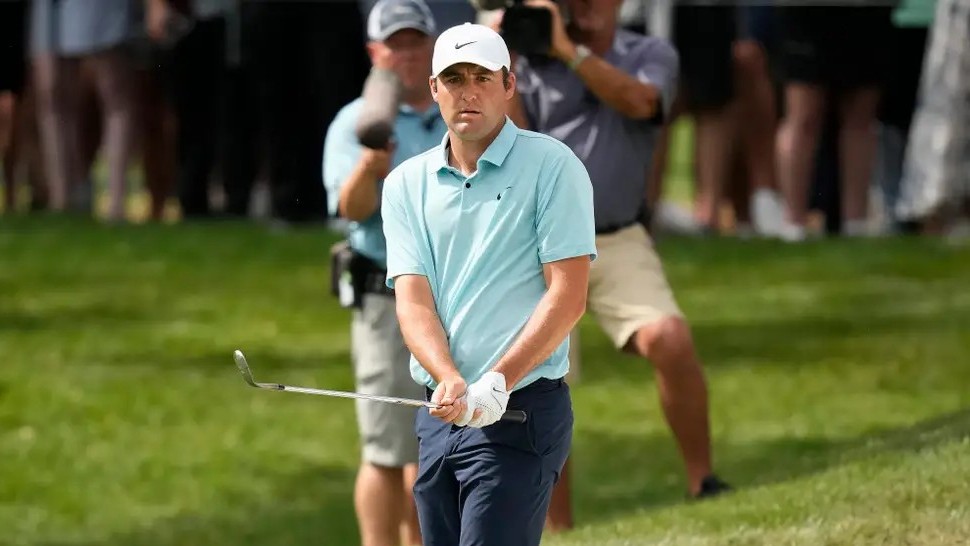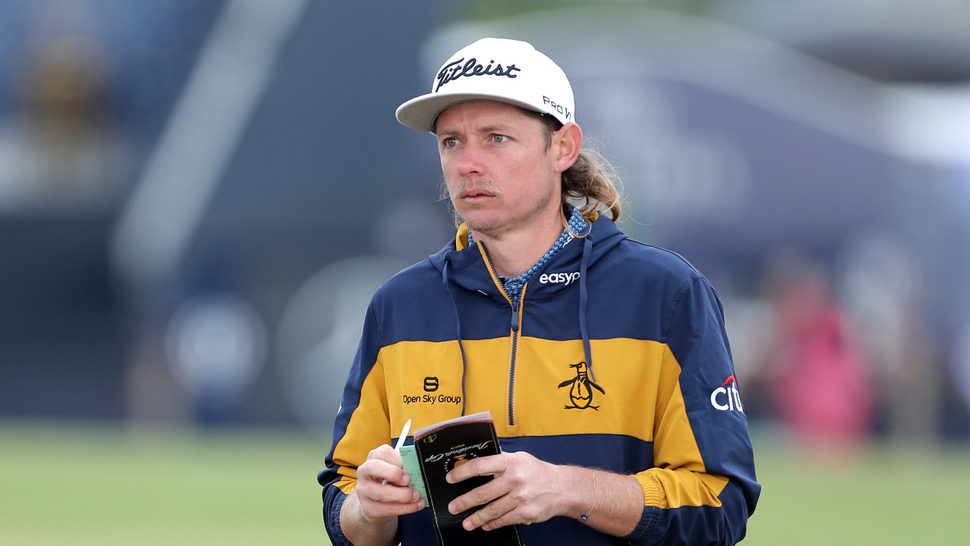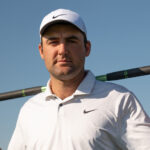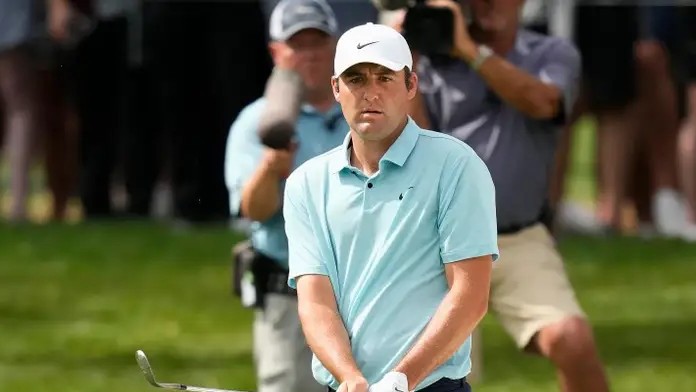
AUGUSTA, GA. Time and talent never stand still. The next generation of star golfers is no longer a “next” but a “now.”
Consider the following, in the current top ten world golf rankings six of the top ten positions are players under 30 years of age. If you extend the count to the top 15 the number rises to 10 within the grouping. More importantly, 6 of the top 14 are no older than 26.
In 2022 three of the four majors were won by players under 30. Extend that time frame one year earlier to 2021 and the same number took home the hardware.
Through the history of The Masters the advantage of course knowledge has been a crucial factor. Only two first-time players, Gene Sarazen and Fuzzy Zoeller, claimed The Green Jacket on the first attempt.
But modern golf has put in motion a faster track of players better prepared and ready to win sooner.

That preparation stems from its earliest days when in the junior ranks and continuing through collegiate years. In some cases, players have opted to forego college golf and join the professional ranks.
In addition to the skills possessed, there are more sophisticated teaching efforts coupled with detailed fitness and nutrition programs. When linked together these elements have provided the ultimate foundation for such players to make their mark
Since 2018, a total of 19 majors have been played and 12 have been won by players under 30 at the time of the victory. In the last 11 majors played, the percentages have increased with 8 having won under the age of 30.
Passing the torch metaphorically is a fundamental reality in all sports but in golf the need to have “experience” has been often cited as the final ingredient to achieving stardom. None more so than at Augusta National. That experience factor has been pushed up by a number of years now. Players are better prepared, have been tested earlier on and are more seasoned for the competitive tests they will encounter.
Recognizing that reality, Masters Chairperson Fred Ridley announced during his annual press briefing that the NCAA Division I men’s winner will be extended an invitation to compete in the 2024 event. At this year’s event, Gordon Sargent, the 2022 NCAA champion is in the field. The 19-year-old Vanderbilt sophomore represents an endless wave of talented players and the world ranked number one amateur has the promise to be a most successful professional when he opts to join those ranks.

.
Defending champion and world ranked number one Scottie Scheffler was quick to cite the preparation he has taken to vault to the top of golf’s ever-changing pecking order.
“I think in the last two years I’ve taken much more of a priority in my physical health. When I first came out on tour when I was in college, it was a priority but it wasn’t as important as it is now,” said Scheffler. “It’s a huge part of my daily routine in making sure I’m physically ready to go.”
The analysis players do when prepping for major events is also now front and center.

Related: Dr. Troy Van Biezen interview
“I’d say every single time I’m out here (Augusta National) I understand the golf course better and better,” said 9th ranked Viktor Hovland. “It is a hard course, but you can make it a lot easier for yourself if you know what holes and what pins to push, which ones you just kind of want to hit in the middle of the green.”
Comfort in the surroundings has become a staple for the “now” generation. Cameron Smith, winner of last year’s Open Championship, admitted to being out of place in his early years playing in The Masters but that feeling is now in his rear-view mirror. “I was a young kid, didn’t really feel like I belonged out here, and I feel like now I show up and I’m ready to go win this thing.”
There is a fine line between confidence and arrogance. The “now” generation has a better understanding of what the former is and how to avoid the mental trap of the latter.
Success in golf at an early age is not a new development. Legendary names such as Bob Jones, Jack Nicklaus and Tiger Woods had it. That pathway was built on more than talent which that famed trio possessed in over abundance. Total belief that great things can happen served as a launching pad for what they each showed on the golf course.

Woods became the poster player for many members of the “now” generation. They grew up with him. Watched every move. They marveled at his laser-like focus. Saw firsthand his unquenchable zest for winning. Woods did not stay within self-created boundaries but pushed through them.
The “now” generation respects those who accomplished much but there is no fear in taking the next steps in reaching the mountain top. The 87th Masters becomes the latest stage they are prepared to face. Ownership of a Green Jacket is not a far-fetched concept but a fervent dream they each want to put into motion.
The formula is a simple one.
The time is now.
World rankings & age of golf’s “now” generation |
|
| #1 Scottie Scheffler (26) #3 Jon Rahm (28) #6 Camerson Smith (29) #7 Xander Schauffele (29) #8 Will Zalatoris (26) |
#9 Viktor Hovland (25) #11 Sam Burns (26) #12 Collin Morikawa (26) #14 Cameron Young (25) #15 (Matthew Fitzpatrick (28) |
***
Final Farewells
The 87th Masters marks the end of the line for two past Masters champions. Larry Mize and Sandy Lyle indicated this year’s event signals the end of their days playing in the event.
Larry Mize, an Augusta, GA native, played the Biblical role of David when defeating two Goliaths, Greg Norman and Seve Ballesteros, in winning the 1987 Masters . Mize needed to birdie the 72nd hole in order to secure a spot in the three-way playoff. Few thought Mize could beat the No. 1 ranked Norman and No. 3 ranked Ballesteros.
After Ballesteros bowed out at the 10th hole, it was Norman and Mize left to decide the outcome.
Norman was just off the green with his approach at the 11th and Mize missed wide right of the green. Incredibly, Mize holed a 140-foot chip shot into the hole. Mize then galloped around the green in exuberant celebration with his hands held together above his head in thankful prayer. Norman stunned was unable to match the score. For the Aussie the hole out by Mize marked the second consecutive major championship in which he was beaten by a shot from off the green in a playoff situation.
The 2023 Masters marks the 40th Masters appearance for the 64-year-old. Mize’s involvement with Augusta National traces back to his teen years when he assisted with leaderboard board operations at the 3rd hole. Mize was also a member of the 1987 USA Ryder Cup team.
Lyle won the 1988 Masters with a superlative 7-iron approach from the left fairway bunker on the final hole to 7 feet. The Scotsman proceeded to make the putt for a one-stroke win over Mark Calcavecchia. Upon the putt falling into the hole the 65-year-old proceeded to improvise a Scottish jig. The birdie from the fairway bunker on the 18th was the first time this feat had been accomplished.
A World Golf Hall of Famer, Lyle also won the 1985 Open Championship at Royal St. George’s and the 1987 Players Championship in a playoff over Jeff Sluman. Lyle played on five Ryder Cup teams for Europe and this Masters marks his 42nd appearance in the event.
